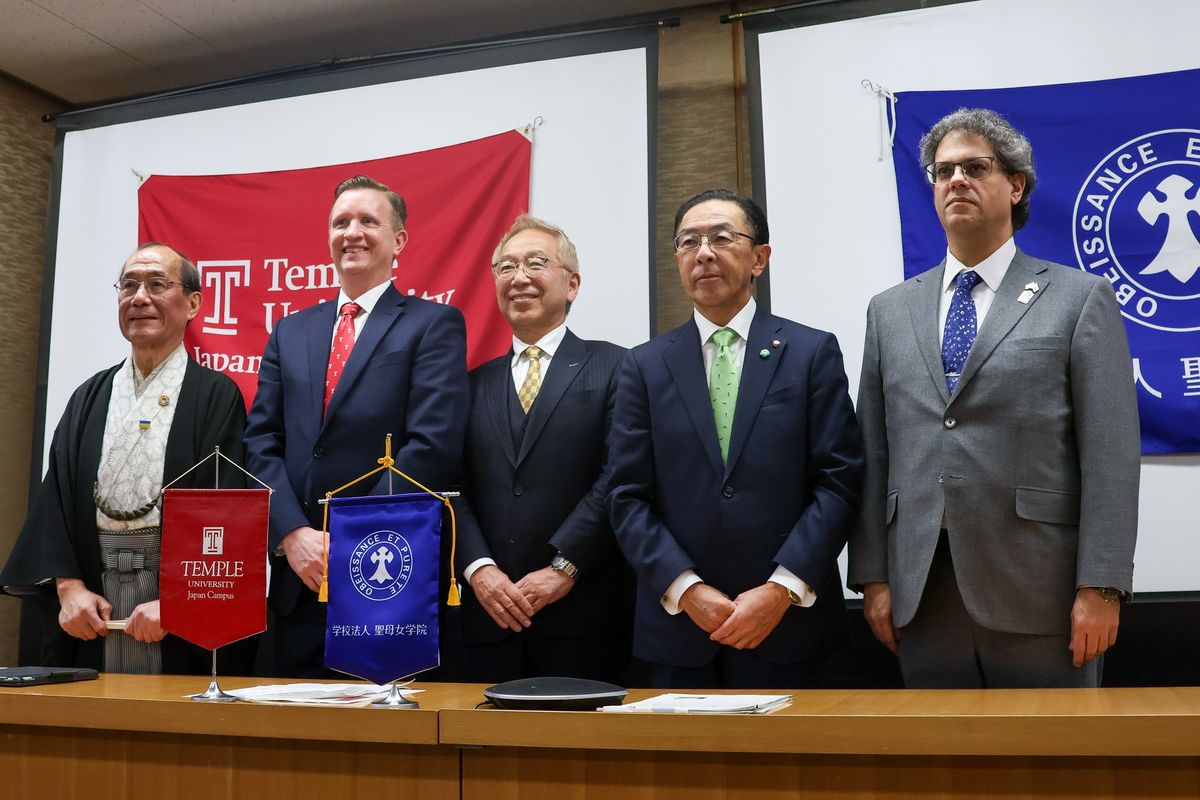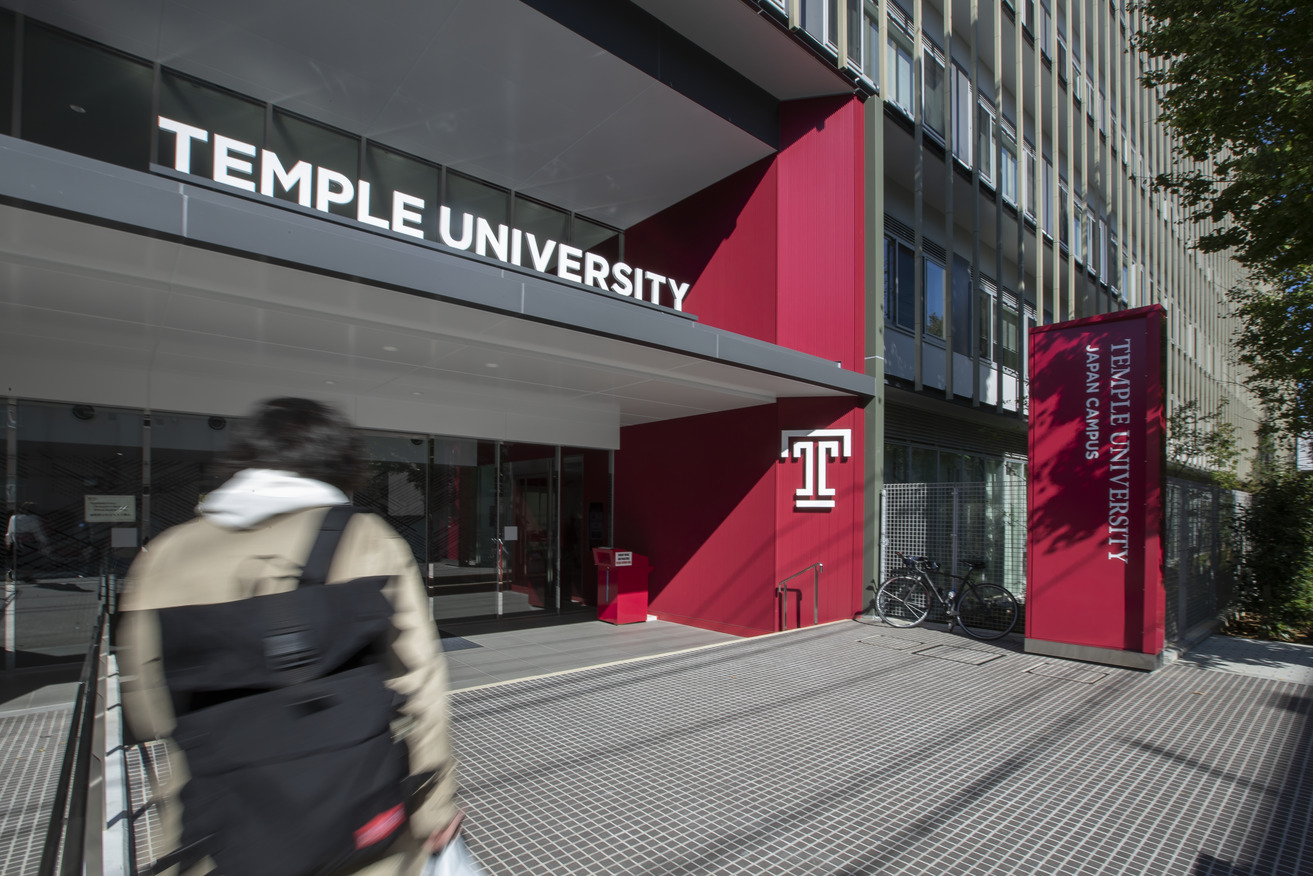After seeing its enrollment increase by more than 75% in the last three years, the footprint of the oldest and largest American university in Japan is about to grow a bit larger.
On Friday, Feb. 9, the establishment of a new Temple University Japan (TUJ) satellite location was announced during a news conference and ceremony held in Kyoto, Japan. Temple University, Japan Campus KYOTO, as it has been aptly named, will officially open its doors in January 2025.
“This new satellite location expands Temple’s global reach, and it is the latest example of how the university offers a gateway to the world,” said Temple University Provost Gregory Mandel about the announcement. “The launch of TUJ KYOTO is also a direct reflection of the overall success of TUJ and its commitment to providing a multicultural and inclusive environment where students can thrive. This is a wonderful accomplishment for TUJ, and we are excited to see the many ways that TUJ KYOTO carries forth the Temple mission and continues to transform lives.”
To facilitate this expansion, TUJ has partnered with Kyoto-based Seibo Jogakuin School Corporation, which owns the buildings where the new TUJ satellite location will reside. Founded more than 100 years ago, Seibo operates campuses in Kyoto and Osaka that serve nursery school through high school students.
The expansion to Kyoto comes at an appropriate time as TUJ celebrated its 40th anniversary in 2022, and its impact has only grown since. Presently, TUJ enrolls a record 2,240 undergraduate students, who come from 70 different countries. These undergraduate students join over 200 other students who are pursuing graduate and professional degrees from Temple in Tokyo. TUJ KYOTO will help meet Japan’s growing demand for further access to the high-quality, world-class education that is a hallmark of Temple University.

On Friday, Feb. 9, a news conference was held to announce the establishment of Temple University, Japan Campus KYOTO. Pictured here, from left to right, are Kyoto City Mayor Daisaku Kadokawa,TUJ Dean Matthew J. Wilson, Seibo Jogakuin President Koichi Akano, Governor of Kyoto Prefecture Takatoshi Nishiwaki and Consul General Jason R. Cubas – U.S. Consulate General Osaka-Kobe. (Contributed photo)
“As Temple University enters its fifth decade of operations in Japan, our entry into Kyoto is the next leap forward. Over the past three years alone, our undergraduate student population has grown by over 75%. To meet the growing demand for a quality Temple University education, we are excited to broaden our presence in western Japan,” TUJ Dean Matthew Wilson said. “Kyoto is a dynamic city that is rich in culture, history and the arts. By establishing a presence in this important historical center, we can simultaneously immerse our students in new concepts and historical traditions both inside and outside of the classroom. The ability to study at a university with locations in Tokyo, Kyoto and overseas (Philadelphia and Rome) is truly unique.”
According to Wilson, TUJ KYOTO will work to foster new student opportunities and build new industry and research partnerships. The new satellite location also allows for the potential expansion of TUJ’s academic offerings, which has been a focused effort in recent years. Just this fall, for instance, TUJ introduced the tourism and hospitality management undergraduate degree program at its Tokyo campus.
“The greatest service we can provide to others is to provide them with opportunity. That is what Temple University has done for decades in Japan: provide students the opportunity of a world-class, American-style education. I congratulate Temple on its plans to open a new campus in Kyoto that will reach up-and-coming leaders in Kansai and western Japan. Our two countries are best when our best and brightest work together,” said U.S. Ambassador to Japan Rahm Emanuel.
Once TUJ KYOTO opens, the university will also work to expand its non-degree English language programs, which support primary and secondary education across the region. Presently, the university offers non-degree programs annually to nearly 2,000 learners through its continuing education and academic English program for children, students and adults.

